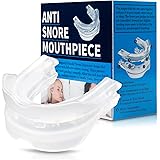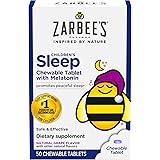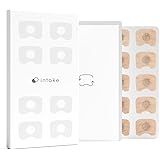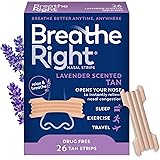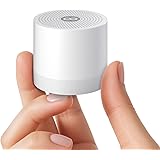Choosing the Ultimate Sleeping Pad for Uninterrupted Backcountry Sleep
Do you often find yourself tossing and turning during a night outdoors, longing for the comfort of your bed at home? As Tim highlights in the video above, achieving truly restorative sleep in the backcountry hinges on much more than just a great sleeping bag. In fact, selecting the perfect sleeping pad can be the single most important factor determining your comfort and overall enjoyment on any outdoor adventure. It’s an essential piece of gear that beginner campers often overlook, leading to restless nights and less energy for the exciting activities planned for the next day.
This comprehensive guide expands on the valuable insights from the video, diving deeper into the nuances of choosing the right sleeping pad. We will explore key considerations, examine the different types available, and provide practical advice to ensure you wake up refreshed and ready to tackle your next challenge, whether you are backpacking deep in the wilderness or enjoying a cozy car camping trip.
Why a Quality Sleeping Pad is Indispensable for Outdoor Adventures
Many novice campers prioritize their tent and sleeping bag, sometimes viewing the sleeping pad as an afterthought. However, an inadequate sleeping pad can quickly turn an otherwise enjoyable trip into a miserable experience. The ground radiates cold, siphoning away your body heat and making even the warmest sleeping bag feel insufficient. Moreover, hard or uneven terrain can create pressure points, leading to aches, pains, and constant adjustments throughout the night.
A good quality sleeping pad provides two primary benefits: insulation and cushioning. The insulation creates a thermal barrier between your body and the cold ground, trapping warmth and preventing heat loss. Simultaneously, the cushioning cradles your body, distributing weight evenly and offering a comfortable surface for rest. This crucial combination ensures deep, restorative sleep, which is vital for physical recovery, mental alertness, and maintaining a positive attitude during demanding hikes or long days of exploration.
Key Considerations for Selecting Your Ideal Sleeping Pad
Before exploring the specific types of sleeping pads, it’s beneficial to understand the fundamental attributes that differentiate them. Balancing these factors according to your specific needs will lead you to the best possible choice.
Weight and Pack Size: Finding Your Balance
The weight and packed size of your sleeping pad are critical, especially for backpackers where every ounce and every inch of space matters. An ultralight backpacking pad will prioritize minimal weight and compact dimensions, fitting easily inside or strapped onto your pack. In contrast, car campers or overlanders have more flexibility, often opting for larger, heavier, and bulkier pads that offer superior comfort without the constraints of carrying them long distances.
Comfort: Tailoring to Your Sleeping Style
Comfort is highly subjective, but generally relates to the pad’s thickness, internal structure, and material. Side sleepers, for instance, typically require thicker pads to prevent their hips and shoulders from bottoming out on the ground. Various internal baffle designs in inflatable pads can also influence comfort, providing a more stable or conforming sleep surface. Testing different options, if possible, is the best way to determine what feels most comfortable for your unique sleeping preferences.
Insulation and R-Value Explained: Staying Warm Outdoors
A sleeping pad’s ability to insulate is quantified by its R-value, a standardized measurement of thermal resistance. A higher R-value indicates better insulation and warmer sleep. This vital metric helps you match your pad to the expected temperatures. For example:
- R-value 1-2: Suitable for warm summer nights and indoor use.
- R-value 2-3: Ideal for three-season camping in mild conditions.
- R-value 3-4: Good for colder three-season trips and early spring/late fall.
- R-value 4-5+: Essential for winter camping and snow expeditions.
Understanding R-value allows you to make an informed decision, ensuring you have adequate warmth for the conditions you anticipate facing.
Durability and Puncture Resistance: Longevity on the Trail
The ruggedness of your sleeping pad is crucial, especially when camping on varied terrain. Pads made with thicker denier fabrics or those without air chambers (like closed-cell foam) offer superior puncture resistance. Inflatable pads, while comfortable, are more susceptible to punctures. Always carrying a small patch kit is a smart precaution, allowing you to quickly repair minor holes and prevent a deflated night’s sleep. Protecting your pad from sharp objects and setting up your tent on cleared ground significantly extends its lifespan.
Ease of Setup and Deflation: Maximizing Convenience
Consider how quickly and easily you can inflate and deflate your sleeping pad. Closed-cell foam pads require no inflation at all, simply unrolling into place. Inflatable pads often require manual effort, though many now come with integrated hand pumps, pump sacks, or even small electric pumps to speed up the process. Self-inflating pads simplify setup by doing most of the work themselves. Furthermore, pads with larger valves and efficient roll-up designs make packing away gear much less of a chore.
Diving Deeper into Sleeping Pad Types
Now that we understand the key considerations, let’s explore the three main types of sleeping pads, plus a luxury option, each with distinct advantages and ideal uses.
1. Closed Cell Foam Pads: The Indestructible Choice
Closed cell foam pads are perhaps the simplest and most robust option available. They consist of dense foam with tiny, sealed air pockets that provide insulation. These pads require no inflation, meaning they are completely puncture-proof and remarkably easy to set up. You just unroll them, and they are ready for use. Additionally, they are incredibly lightweight and highly durable, making them a popular choice for budget-conscious adventurers or those seeking a failure-proof solution.
- Pros: Extremely lightweight, highly durable, cannot puncture, very affordable, no setup time, doubles as a sit pad.
- Cons: Bulky to pack, generally less comfortable due to their thinness, typically lower R-values unless very thick.
- Best Uses: Ultralight backpacking, budget camping, emergency use, as an insulating layer underneath an inflatable pad in winter conditions, or as a protective ground cover for an air pad.
2. Inflatable Sleeping Pads (Air Mattresses): Comfort and Compactness
Inflatable sleeping pads, often referred to as air mattresses for camping, offer the best balance of comfort and compact packed size for many backpackers. These pads achieve their cushioning and insulation through internal air chambers. Many modern inflatable pads also incorporate synthetic insulation or reflective barriers inside these chambers to boost their R-value without significantly increasing weight.
- Pros: Extremely comfortable, high R-values are common, pack down very small for easy transport, excellent support for side sleepers.
- Cons: Susceptible to punctures (necessitating a patch kit), require inflation, can be noisy (crinkly sounds) depending on the model, generally more expensive.
- Best Uses: Backpacking, motorcycle camping, side sleepers, anyone prioritizing comfort and a small packed size. Always read reviews to check for noise complaints before purchasing.
3. Self-Inflating Sleeping Pads: The Balanced Performer
Self-inflating pads combine aspects of both foam and inflatable pads. They feature an open-cell foam core bonded to an airtight fabric shell. When the valve is opened, the foam expands, drawing air into the pad. A few breaths might be needed to achieve full firmness, but they largely inflate themselves. This design offers a great blend of comfort and convenience, with less setup effort compared to fully inflatable options.
- Pros: Good comfort levels, offer decent insulation, quicker and easier setup than fully inflatable pads, generally more puncture-resistant than pure air pads.
- Cons: Heavier and bulkier than inflatable pads, can still puncture, typically do not pack down as small.
- Best Uses: Car camping, canoe camping, front-country camping, or for those who prioritize a good night’s sleep over minimal weight and packed size on shorter trips.
4. Luxury & Extra Thick Camping Pads: The Ultimate in Comfort
For those whose adventures involve car camping, overlanding, or setting up a comfortable base camp, luxury and extra-thick camping pads provide unparalleled comfort. These pads are essentially portable mattresses, often boasting significant thickness (3-6 inches or more) and plush top fabrics. They are designed for maximum sleep quality where weight and packed size are not concerns.
- Pros: Exceptional comfort and support, feel very much like a bed, often have very high R-values, highly durable.
- Cons: Very heavy, extremely bulky when packed, not at all suitable for backpacking.
- Best Uses: Car camping, overlanding, RV travel, base camps, or any situation where comfort is the absolute top priority and transportation is not an issue.
Choosing the Right Pad for Your Adventure Style
Your specific outdoor pursuits will dictate which sleeping pad type best suits your needs. Thinking about how you travel and what your priorities are makes the selection process straightforward.
For Ultralight Backpackers and Long-Distance Hikers
Prioritize inflatable pads with high R-values relative to their weight. Look for options that pack down incredibly small, leaving valuable space in your backpack for other essential gear. While closed-cell foam pads are ultralight, their bulk often makes them a secondary choice for those focused on minimizing volume.
For Car Campers, Overlanders, and Family Camping
Comfort should be your primary concern. Self-inflating pads or the larger, luxury thick camping pads offer superior cushioning and stability. Weight and packed size become less critical when gear is transported by vehicle, allowing you to invest in a pad that guarantees a great night’s sleep for everyone.
For Cold Weather Expeditions and Winter Camping
Insulation is paramount. Seek pads with an R-value of 4 or higher. Many winter campers also opt for a layering system, placing a closed-cell foam pad underneath an inflatable or self-inflating pad to create a super-insulated barrier against extreme cold. This combination also provides a fail-safe in case the air pad punctures.
For Budget-Conscious Explorers
Closed-cell foam pads offer an excellent entry point into outdoor sleeping comfort at a very low cost. For a step up in comfort without breaking the bank, certain inflatable pads, such as the “Sleep and Go” pad mentioned in the video, provide a great value. Even budget-friendly self-inflating options, like the Close Nature pad, can be fantastic for car camping adventures.
Caring for Your Sleeping Pad: Tips for Longevity
Proper care significantly extends the life of your sleeping pad, protecting your investment and ensuring reliable comfort. After each trip, allow your pad to fully air dry before storing it, especially if it’s an inflatable or self-inflating model. Store inflatable and self-inflating pads with their valves open in a cool, dry place, ideally unrolled or loosely folded, to prevent the foam from compressing and to maintain valve integrity. Always use a ground cloth or footprint under your tent to provide an extra layer of protection against punctures. If a puncture occurs, use a dedicated patch kit promptly; a small repair can save your night and your pad.
Ultimately, a good night’s sleep in the outdoors is invaluable, directly influencing your energy levels and enjoyment. As Tim experienced, and as many seasoned adventurers know, investing time in choosing the right sleeping pad is a decision you will never regret. Consider your specific needs, adventure style, and budget, then select the pad that will consistently deliver the comfort and insulation you deserve.


